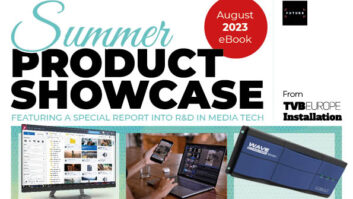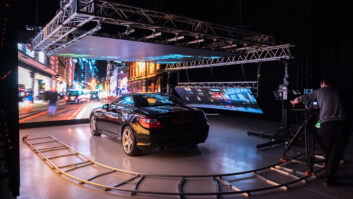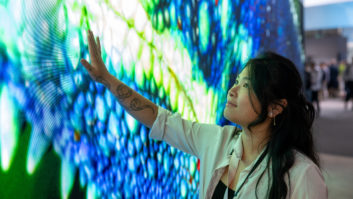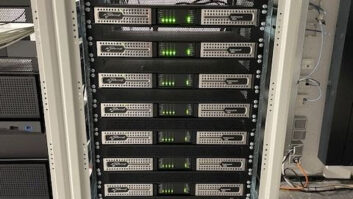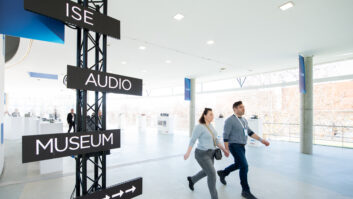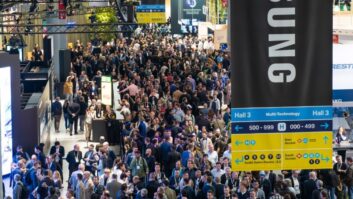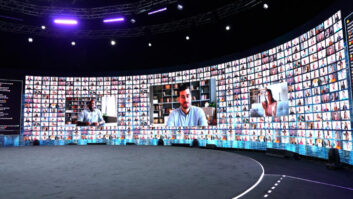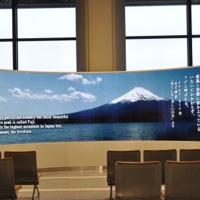
In an environment where image overload can make us oblivious to the messages around us, where can digital out-of-home find its real wow factor? Geny Caloisi talks to a select group of industry experts to find out how DOOH can have a greater impact.
Many retailers believe that selling a good product or providing a good service is enough to earn their customers’ loyalty, but brand awareness and customer loyalty fluctuate enormously in today’s marketplace. The modern shopper has high expectations, is technology savvy and has a low threshold of tolerance when the application doesn’t work. His attention span and desire to impulse buy are very short. All of this means it is important to use the digital out-of-home (DOOH) medium wisely. The agreement among interviewees is that, to attract people’s attention, there needs to be a balance between technology innovation, creative content and system usability. One way to stand out from the crowd is by using screens that go beyond the traditional landscape or portrait rectangular format. Pufferfish, for instance, manufactures rear-projection globe screens; Mitsubishi has created curved and globe OLED displays; while eyevis and Christie use rear-projection on smaller size tiles to create unusually shaped screens. Ben Allan, sales and marketing manager at Pufferfish, says: “The proliferation of screens in our urban landscape means that they become part of the environment, barely more noteworthy than anything else that makes up the fabric of things.
“There have been some hardware innovations in recent years that have started to push the physical boundaries of screens and helped reinvigorate the medium with the unexpected. Christie MicroTiles, eyevis’ omniShapes, PufferSpheres, Dreamoc with its video holographic display (invented by RealFiction), floor projection, curveLED, various LED meshes/shapes and large-scale projection mapping have all found their place in the DS market, allowing the formation of unconventional screens that form 3D shapes or transform existing structures and surfaces.”
Peter van Dijk, business development manager, Mitsubishi Electric Europe, thinks there is still a lot to be seen: “I don’t think we have even begun to approach the limits of possibility. For example, versatile control or content management systems can turn a bunch of standard LCD panels into a display that really grabs attention. Other kinds of display technologies, such as our modular OLED display for example, free the designer to use size and shape to create visual impact.” The right impressionBut it’s not just about sizes and shapes: creative agencies need to learn to think of screens as being in a 3D environment and interconnected – not just as moving posters. Sometimes they also have to use the screen manufacturer’s own creative programs to be able to employ the displays to their full capacity.
Serge Konter, communications manager at Swiss media player manufacturer SpinetiX, believes that the secret of having attractive DS is not so much on the display but rather on the possibilities that the media players offer. “In the past, the marketing department was the one driving what would go on the screens and they normally would encounter resistance from the IT department that would say ‘not possible’,” he recalls. “Now that you have straightforward media players like ours, it is the technical people that are asking for more fun things to do on the screens. The technology is enabling creativity to flourish.”
Konter gives an example: “We have seen recently a very simple application from one of our customers. They combined projection and LCD screens to create a videowall. They had the projection screen with a cut-out where the LCD screen was. By combining both display solutions, they achieved a videowall with two different brightnesses creating a very innovative visual effect with a small investment.”
And what about 3D? For quite a few years now we have heard screen manufacturers talking about auto-stereoscopic glasses-free displays as the next big thing for DS.
Tom Zerega, CEO and founder of US-based Magnetic 3D, says: “We believe that for DS to be relevant to the consumer, it must offer something of value. In an airport, digital signs provide information when the consumer needs it, but your average consumer doesn’t go out of his or her way to look for a digital advertisement. This is why 3D is so interesting, because people are drawn to it irrespective of whether it’s an advert or not. Consumers want to see 3D without glasses because it’s something that seems impossible, and it isn’t available at home (at least for now).”
However, Zerega admits being biased. “I don’t really think that 3D alone will be the next big thing in digital signage. Interactivity, gesture-controlled displays and augmented reality (AR) solutions will be bringing another level of engagement to what was once a passive digital signage environment. With any luck, Magnetic 3D will deliver similar solutions that are integrated with 3D capabilities to harness the best of what each has to offer.”
Neeraj Pendse, product line manager for DS at Elo Touch Solutions, agrees: “As a touchscreen company, we naturally believe in the increased wow factor that interactivity – and touchscreens being the dominant technology for interactivity today – brings to a digital signage installation, both for the user and marketers. Interactive technologies can record people’s preferences and even observe human behaviour in the environment, providing valuable metrics to marketers.
“Interactivity also offers a feeling of ‘control’ on what the consumers see – they can look for the information they want rather than what marketers think they want. The result is elevated user engagement.” Personal touchDS is increasingly using personal devices such as mobile phones and tablets to engage with the public. A good example of this was the ‘Drag Him Away’ campaign run by the UK National Centre for Domestic Violence in Euston Station, London. Using interactive technology, commuters could turn their mobiles into remote controls and control the characters on the digital posters, dragging the man away from the woman and onto the adjacent billboards.
Pufferfish’s Allan also sees mobiles as an essential part of the future of DOOH. “The surge in creative AV and signage hardware is dwarfed in comparison to the personal computing revolution,” he says. “The prominence of seemingly utilitarian clocks, weather reports and RSS news feeds in digital signage only speak of lack of imagination and ambition for these digital canvases. Worse still, since a large portion of the population is carrying a smartphone in their pockets, they already have the time, the weather forecast and whatever news they want at their fingertips. The power and potential of what we all carry around in our pockets is truly revolutionary, and more than capable of delivering ‘wow’ results to digital signage installations that are well thought through.”
Martine Dodwell-Bennett, sales and marketing director at Steljes, also points out that mobiles enable the possibility of secure credit and mobile payments together with targeted advertising communications. “The convergence of social media and digital signage platforms is going to change how we use this medium,” she adds. Improving DOOH Liam Boyle, managing director at creative agency Monster Media, says that it’s not just about using new technology, it’s also about creating the right application: “Any advancement to static digital signage is fantastic, as there is a job to be done there. However, in order to create a truly unique immersive experience, brands need to look towards innovation-led solutions that use smart technology to create more of a lasting connection between consumer and brand. Solutions such as gesture-recognition, multitouch, AR, directional sound, facial and gender recognition all have their place, but must be done for the right reason with a strategic insight at the core.”
One of Monster Media’s most recent interactive applications is the Tesco ‘interactive virtual grocery store’ at Gatwick Airport’s North Terminal. This enables travellers to select and buy items by scanning the barcodes with their smartphones and have the items delivered upon their return home.
Magnetic 3D’s Zerega believes that there need to be standards and better metrics for DOOH: “It will take a big company like a Google to come in and say, here is how digital is measured in the out-of-home market – unless Clear Channel or JCDecaux gets there first.”
Dodwell-Bennett would like to see more education for clients to understand the benefits of DOOH, while Konte thinks partners and resellers need to be trained in order to improve their capacity for innovation.
Boyle adds: “We as an industry need to do a better job of informing our partners rather than selling to them. There are plenty of early adopters and risk-takers out there, but as the technology in our field continues to advance we need to demonstrate how seamlessly we can integrate these solutions into the planning mix.”
Van Dijk concludes: “Clearly the economy is a major factor in the continuing development of DS in public spaces. I think as the economy picks up, we’ll see an uptick in demand for more adventurous digital signage projects. Versatility is the key concept here; the role of manufacturers such as ourselves is to create versatile tools to enable system designers and site owners to deliver maximum value with minimum outlay.” www.elotouch.comwww.eyevis.dewww.magnetic3D.com
www.microtiles.eu
www.mitsubishielectric.comwww.monstermedia.netwww.pufferfishdisplays.co.ukwww.spinetix.comwww.steljes.com
